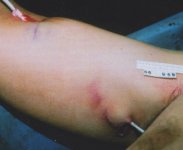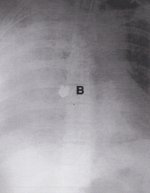All along it was ammunition.
Yep, that's what the official finding was. Personally, I think that was because the agents involved had already paid a very high price for screwing he pooch the way they did.
A lot was made of the "insufficient" penetration of the 9mm Silvertip. Nobody is so callous as to say a better shot would have ended things faster.
The agents did the best they could, with what they had, and what they knew. Unfortunately, some of the things they knew were the wrong things for the situation they were in.
The FBI had access to all the toys, rifles, submachine guns, shotguns, bullet proof vests, etc., but either didn't have them with them, didn't wear them, or couldn't get to them once the shooting started.
This shootout has been studied extensively in the 20 plus years since, and while not wishing to cast aspersion on the individual agents or the honor of the agency, about the only things they did right were show remarkable courage under fire, and finally stopping the killers.
One of the things that always irritates me is the huge volume of concern about "overpenetration" for defensive ammo. People seem to be intensely worried about it, and here is an example of where lack of penetration is blamed as the culprit.
The "faulty" 9mm went through Platt's arm, and wrecked a lung. If I recall correctly, had it kept going it still would not have hit the heart, it would have been just above it. One surgeon I heard stated that had the killer received that wound at the operating room door, it still would have mostly likely been fatal.
There are no magic bullets. not even .40/10mm


